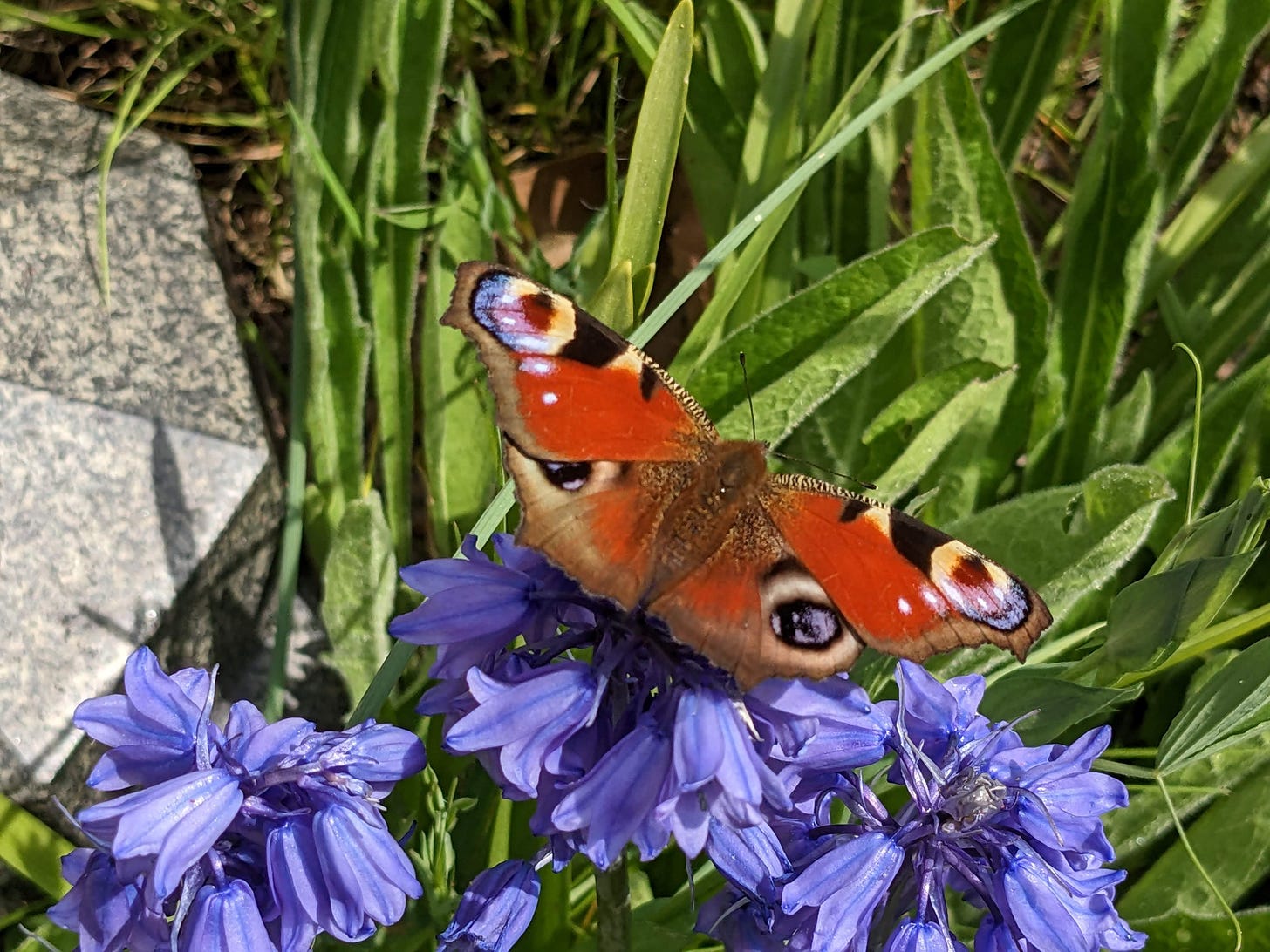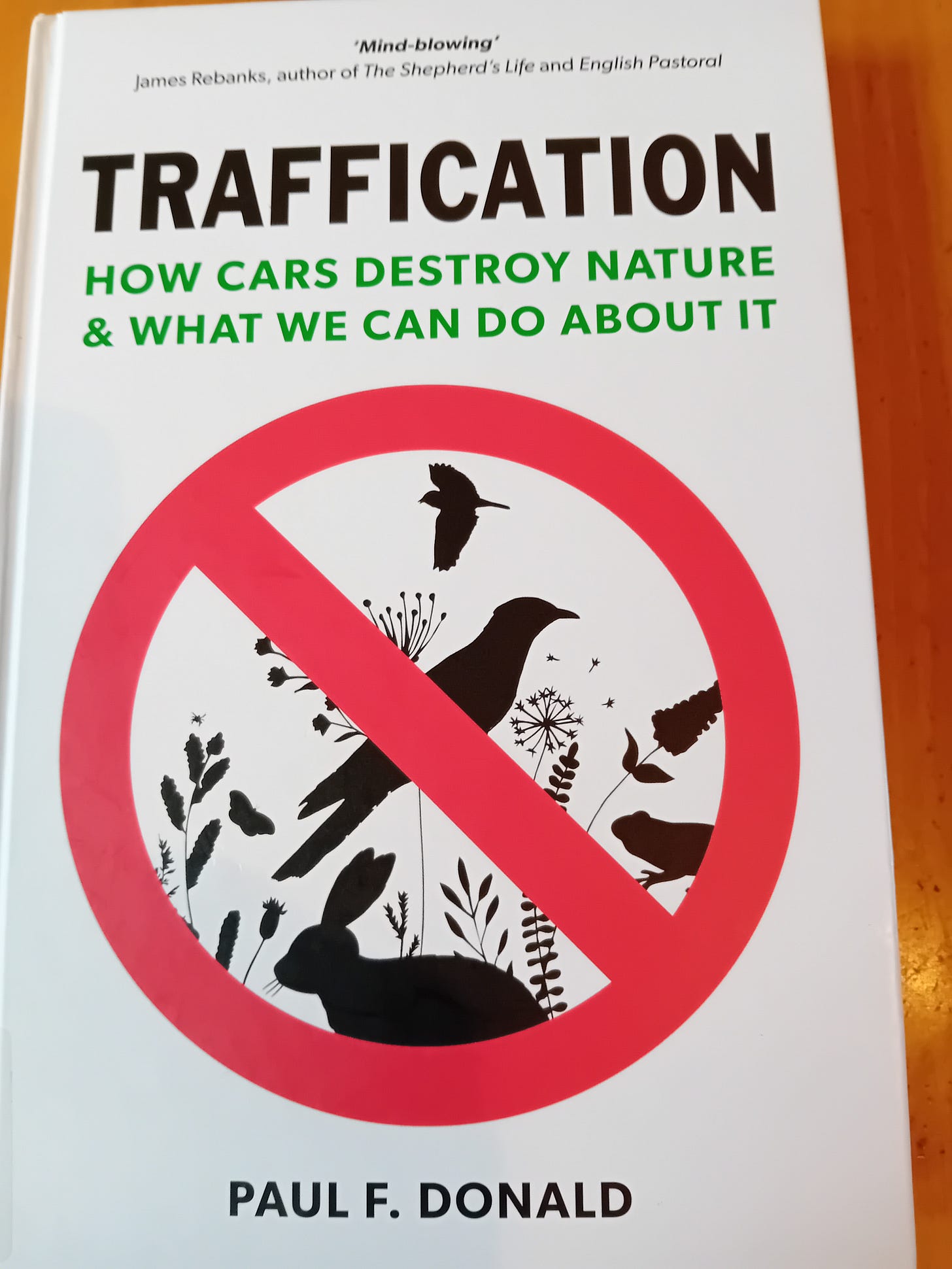The wildlife road toll
On an important book that should be more widely read, and some of the things it doesn’t say
Many years ago, while I was studying civil engineering, I spent a summer helping build a motorway through the garden of England. Those long, hot days working as a junior engineer on the M20 in Kent taught me a lot – about racism and sexism and the advantages of an education. I also discovered that I was more interested in understanding why we build roads, than how. The partially completed road already sliced through the countryside, but it was still possible to find places only a few metres away where you could hear birdsong and experience a landscape that was as tranquil as it would have been before the road’s arrival. I knew far less about wildlife then than I do know but it wasn’t difficult to imagine how much those places and their inhabitants would change once thousands of vehicles were thundering along the road each day.
I went on to do a Masters in Transport Planning and have spent a lot of my career working on transport policy. Although my current role is focused more on other aspects of environmental policy, I’ve still retained a strong interest in transport. So, when I heard that someone had written a book about the impacts of traffic on wildlife, I was immediately intrigued. I read Traffication: How Cars Destroy Nature and What We Can Do It by Paul Donald for the first time soon after it was published in 2023 and have recently read it again. It’s a really important book that should have had a far bigger impact than it has.
Donald draws on his expertise as a conservation scientist to provide a comprehensive overview of the evidence of the impacts of traffication – a term he devised himself to describe ‘the expansion of road networks and the burgeoning of motorised travel along them’. This doesn’t make for easy reading, not because of Donald’s writing style - he presents this evidence in an extremely readable way – but because the research he summarises paints such a shocking picture of the harm that roads and the vehicles that use them are doing to wildlife. He makes a compelling case that traffication is a far bigger risk to the future of wildlife species than threats such as habitat loss, intensive agriculture and climate change which are prioritised by the conservation movement.
It’s not just the most obvious impact of roadkill, though the figures here are depressing enough: it is estimated that tens of millions of birds, and hundreds of thousands of foxes, hedgehogs and mammals are killed on Britain’s roads each year. It’s also the barriers that roads create, increasing the risk of extinction for the species that avoid them, by fragmenting habitats and making it harder for them to adapt to climate change by moving to cooler areas. Then there are all the other impacts that road transport has far beyond the road itself – air pollution, water pollution, light pollution and so on. Donald discusses the consequences of these various impacts, not only for birds and mammals but also for insects, and even plants. For example, researchers have identified that plants grow more slowly when exposed to high levels of traffic noise, and there’s evidence that airborne traffic pollution may be making it harder for flowers to attract their insect pollinators.

One of the chapters I found the most shocking is the one on traffic noise. Like us, animals subconsciously perceive road noise as a danger signal, and they suffer exactly the same sort of health impacts as humans as a result. However, it can have far more devastating impacts, not least because ‘levels of noise that even the most sensitive of us might find entirely tolerable can have severe impacts on wildlife.’ Donald stresses that it’s not usually the car’s engine that’s responsible as traffic noise is now primarily the result of the friction between the tyres and the road surface. Similarly, most traffic-related air pollution is caused not by the engine but by particulate matter from tyres, brake pads and other components which break down during use. For this reason, while Donald supports a switch to electric vehicles (EVs), he stresses that it is only part of the solution. EVs are just as likely to shed particulate matter and above about 20mph they cause just as much noise as other vehicles.
In the last two chapters where Donald considers what we can do about traffication, he makes a strong, and convincing, case for speed reduction. As well as reducing roadkill, this would significantly reduce many of the other negative impacts of traffic. He is keen to stress that there is no need for people to give up their cars entirely but instead to use them in a different way but when he looks beyond what individuals can do, the solutions he proposes are generally focused on technological and infrastructure changes. Donald provides a number of interesting examples of ‘green bridges’ and other wildlife crossings which have been used successfully to reduce roadkill and create ‘permeable highways’. However, most of these are from protected areas in North America where the population levels, traffic conditions and wildlife species are very different from those in the UK. Such crossings could play an important role in some places in this country, but as Donald acknowledges few have been built to date and they are very expensive.

Despite the fact that around a quarter of households in this country (including my own) don’t own a car either because they can’t afford one, or because, like us, they have chosen not to, Donald appears to assume that all his readers currently drive for most of their journeys. Of course, not owning a car, doesn’t completely exempt me from contributing to traffication. We hire one occasionally for holidays and the food I eat, the clothes on my back, the laptop I’m typing on have all travelled by road at some point in their journey to reach me. We can’t turn back the clock and remove road transport from our lives, but we can focus on designing a future where more of us are less dependent on cars for our everyday needs. And it’s disappointing that the book doesn’t really address this issue.
While Donald’s list of advice for individuals does include ‘drive less’, he doesn’t place enough emphasis on the wider changes needed to support this. For a start, we need to ensure that the 1.5 million new homes that the Government has pledged to build over the next 5 years are built in places, and with the accompanying facilities, that allow their residents to choose to live car-free. There also needs to be far more investment in providing good alternatives to the car in both new and existing settlements including better (and more affordable) public transport and improved facilities for walking and cycling.
We also need to develop fairer ways of paying for road use and raising the revenue needed to pay for alternatives to the car. There’s a growing consensus among transport experts about the need for some form of ‘pay-as-you-go’ road user charging (see, for example, this report) in order to manage congestion. The technology exists to allow for such charging to be varied by time of day and type of road and to exempt certain vehicles so it could potentially be used to help protect wildlife too, for example, by making driving at night on certain rural roads prohibitively expensive to all but residents and essential traffic. If priced at a level which took account of the full external costs of road transport, including the impacts on wildlife, such charging could also be used to raise the revenue needed to fund green bridges and the other more expensive measures needed to overcome the effects of traffication. It’s unlikely that the high levels of charge generated by such an approach would be politically or socially acceptable but we definitely need to start thinking about what we are prepared to pay to reduce the wildlife road toll. And as Donald highlights, traffication has a human cost too and it is often the poorest who are most likely to be killed or be harmed by its impacts so there are strong social justice grounds for tackling this issue as well as environmental ones.
Please don’t let my reservations about the solutions in Traffication deter you from reading it. As the quote from James Rebanks on the cover of the paperback version says this is a book that everyone who cares about nature should read.
To finish….
…a few things I’d like to share:
1. How can we build a future where we don’t need to own a car?: This podcast from the University of Leeds includes an interesting discussion with researchers there who are looking at ways of making transport both more sustainable and equitable in future. As the participants point out, this is as much about the kind of places we want to live, as the transport choices we make and the transition to EVs means that we are currently at a critical turning point.
2. Good Journey: If you’re looking for opportunities for car-free days out in the countryside then this website has lots of suggestions, including many places which provide discounts for people arriving without a car.
3. Why birdsong matters more than you think: An interesting article from the Guardian summarising research into the benefits of research into the health benefits on humans of spending time in places with a rich variety of birdsong.





Thanks for sharing. In many parts of Africa, roads are the primary drivers of environmental destruction. There are several papers out there about how they disrupt wildlife and biodiversity.
Fantastic - thank you. I have been meaning to read Traffication for a long while. I’ll put it back on my list! In case of interest, a recent book that covers a similar topic for your American readers is Ben Goldfarb’s ‘Crossings’.